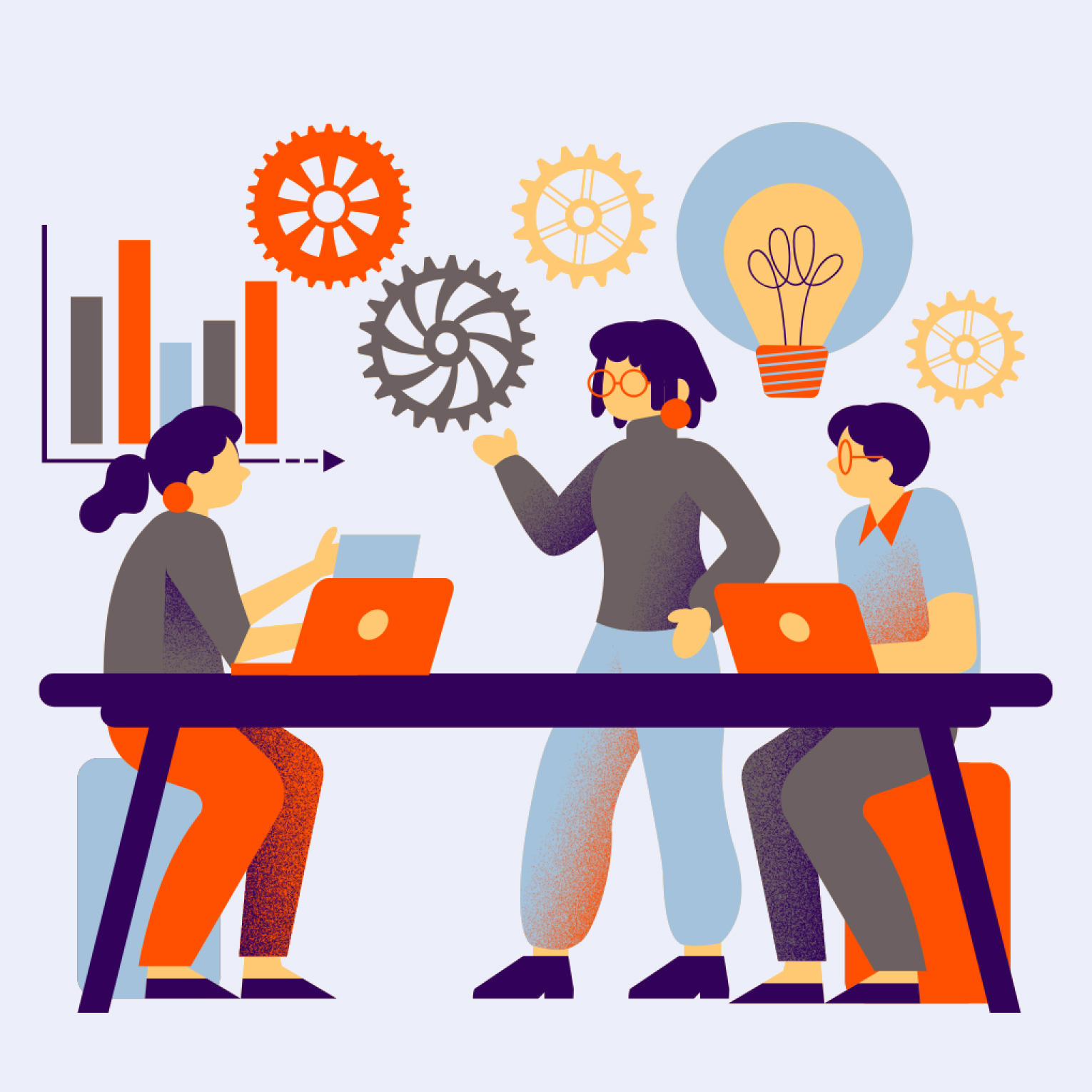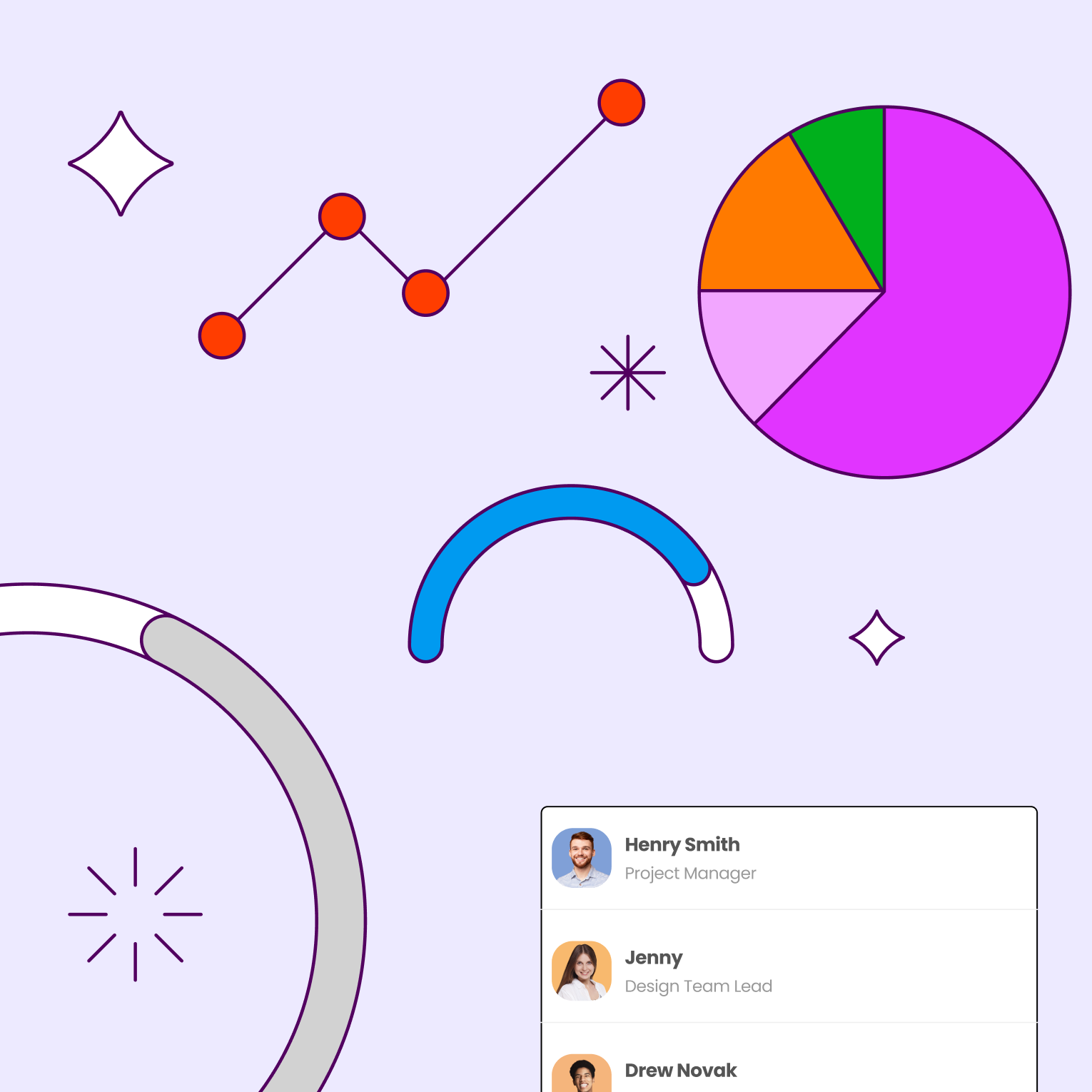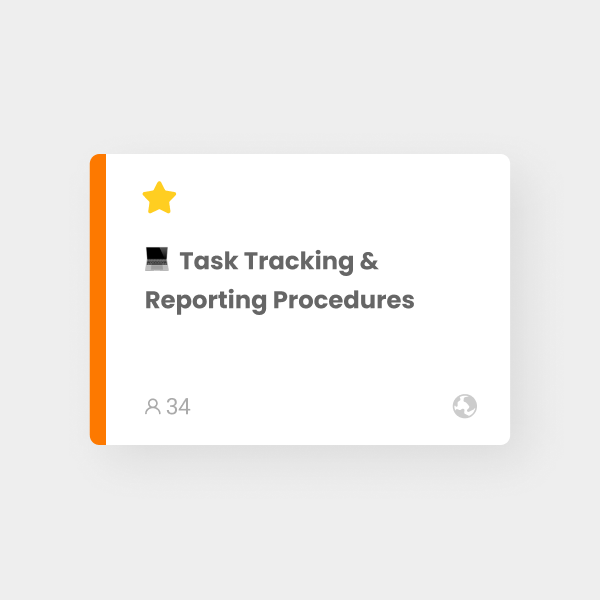Beyond Apps: Understanding Systems
Organizational tools offer more than just individual apps; they serve as full-fledged systems. Take Morningmate as an example. This tool combines task management, communication, file sharing, and scheduling into one cohesive workspace. This means you don’t have to switch between different platforms like Slack, Trello, and Google Drive. By bringing these features together, these systems streamline how you manage tasks, coordinate time, and communicate. The goal is to build an ecosystem that aids all parts of your management role, ensuring information and tasks move smoothly.
Reducing Stress and Boosting Productivity
The right organizational tools can significantly reduce stress by simplifying complex processes. When tasks are clearly defined and responsibilities are transparent, teams operate with less friction. This clarity not only reduces confusion but also enhances productivity, as team members can focus on their core responsibilities without getting bogged down by administrative tasks.
Enhancing Communication and Coordination
Effective communication is at the heart of successful management. Organizational tools facilitate better communication by providing platforms for instant messaging, file sharing, and collaborative workspaces. When everyone is in sync, coordination improves, leading to more efficient project execution and a more cohesive team dynamic.
Task Management Tools
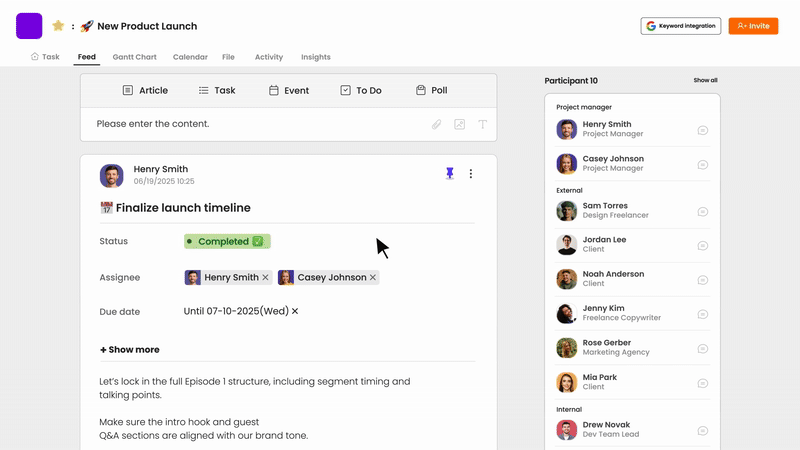
Keeping Tasks in Check
Task management tools are essential for keeping track of what needs to be done and when. They help managers assign tasks, set deadlines, and monitor progress. While popular tools like Trello, Asana, and Todoist allow users to create lists and collaborate on simple tasks, all-in-one platforms like Morningmate offer a more advanced and integrated solution.
Morningmate combines robust task management with project structuring features such as auto-generated Gantt charts, AI-recommended subtasks, 5-step workflow statuses, and role-based task assignments. Its project-based structure enables teams to stay aligned from kickoff to completion, making it ideal for organizations seeking both visibility and control in one place.
Prioritizing Tasks Effectively
Effective task management isn’t just about listing tasks—it’s about executing them in the right order. Morningmate supports smart filtering by priority, status, and deadlines, enabling managers to sort tasks according to urgency and importance. This ensures that critical tasks are tackled first and nothing slips through the cracks.
Assigning and Tracking Responsibilities
Assigning tasks is only part of the equation; tracking their progress is equally crucial. Morningmate’s visual dashboard and status tracking system make it easy to monitor who’s working on what and how far along they are. This transparency empowers managers to take timely action when delays or blockers arise.
Encouraging Team Collaboration
Collaboration is built directly into Morningmate’s task system. Team members can comment on tasks, attach files, and mention colleagues, all within the context of a single task card. This reduces scattered communication and encourages real-time collaboration without leaving the platform.
Visualizing Workflows
Morningmate includes a Kanban-style view, planned Gantt chart views, and calendar-based scheduling. Tasks can be dragged and dropped across workflow stages, helping teams visualize work-in-progress, identify bottlenecks, and ensure smooth handoffs across departments.
The Power of Smart Views
Unlike many task apps that require multiple integrations, Morningmate offers a unified task view. Managers can toggle between list, calendar, and Kanban views—customized by team or individual preference. This flexibility helps users adapt the tool to their workflow, not the other way around.
Identifying and Resolving Bottlenecks
When workflows are visualized, bottlenecks become more apparent. Managers can identify stages where tasks are getting delayed and investigate the underlying reasons. Whether it’s a resource issue or a need for additional training, addressing these bottlenecks promptly can significantly enhance team productivity.
Enhancing Workflow Efficiency
Visual workflow tools also contribute to efficiency by allowing tasks to be easily moved from one stage to the next. This drag-and-drop functionality simplifies task updates and ensures everyone on the team is informed of changes in real-time. Such transparency and ease of use contribute to a smoother, more efficient workflow.
Communication Tools
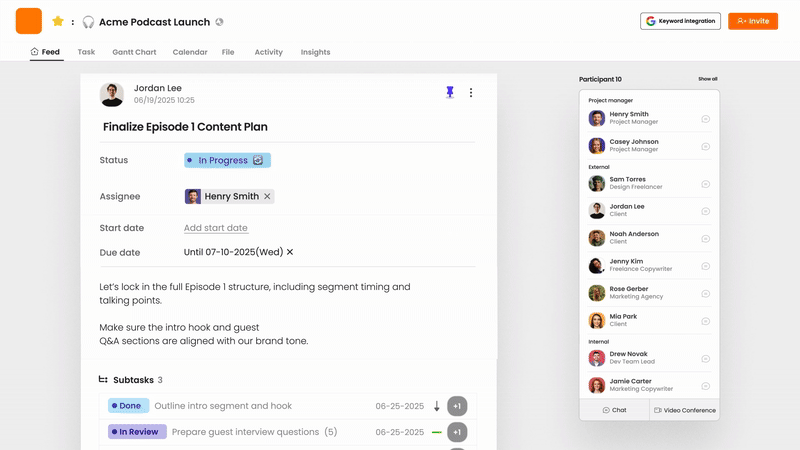
Enhancing Team Communication
Effective communication is crucial for any manager. Tools like Slack, Microsoft Teams, and Zoom facilitate instant communication, allowing team members to chat, share files, and hold virtual meetings. These tools help bridge the gap between in-office and remote workers, ensuring everyone stays connected.
Real-Time Messaging and Collaboration
Instant messaging tools like Slack allow for real-time communication, reducing the need for lengthy email exchanges. Teams can create channels dedicated to specific projects or departments, ensuring that relevant information reaches the right people quickly. This immediacy fosters a dynamic work environment where issues can be addressed as they arise.
Bridging In-Office and Remote Teams
In today’s hybrid work environments, tools like Microsoft Teams play a crucial role in connecting remote and in-office employees. Video conferencing and screen-sharing features allow for seamless virtual meetings, ensuring that distance doesn’t hinder collaboration. This connectivity is vital for maintaining team cohesion and ensuring that everyone is aligned with company goals.
Fostering Open Communication Channels
Open communication is essential for a healthy work environment. Tools like Zoom provide platforms for regular check-ins and feedback sessions, allowing managers to stay informed about team morale and challenges. By fostering open channels of communication, managers can build trust and encourage a culture of transparency and mutual support.
Document Sharing and Collaboration
Gone are the days of endless email chains and scattered folders. While tools like Google Workspace and Microsoft 365 offer powerful document editing, they lack native integration with task or communication workflows. Morningmate bridges this gap by combining file storage, sharing, and collaboration within each project room.
Simultaneous Document Collaboration
Morningmate supports real-time file access across devices and includes unlimited storage with support for PDFs, slides, spreadsheets, and more. Team members can collaborate on posts and tasks with attached documents, and leave comments directly within the project thread—without needing external links.
Streamlining File Management
All files in Morningmate are organized by project and folder, making it easy to locate and manage documents in context. Features like smart tagging, search filters, and read receipts help teams stay on top of critical documents and reduce version confusion.
Enhancing Document Security
Morningmate applies financial institution-grade security, including file download restrictions, watermarking, screenshot blocking, and IP access control. These advanced protections make it ideal for teams managing confidential data or working across distributed environments.
Time Management Tools
Managing Your Time Effectively
Time management is vital for managers juggling multiple responsibilities. Tools like Calendly, RescueTime, and Clockify help you schedule meetings, track time spent on tasks, and analyze productivity patterns. By understanding where your time goes, you can make more informed decisions about prioritizing tasks and delegating responsibilities.
Scheduling and Prioritizing Tasks
Time management tools like Calendly are essential for effective scheduling. They allow managers to set available time slots for meetings, reducing the back-and-forth typically associated with scheduling. By prioritizing and blocking time for high-impact tasks, managers can ensure that their most important responsibilities receive the attention they deserve.
Tracking and Analyzing Productivity
Understanding how time is spent is crucial for improving efficiency. Tools like RescueTime provide insights into how much time is dedicated to specific tasks and applications. By analyzing this data, managers can identify patterns, such as time-wasting activities, and implement strategies to improve productivity.
Delegating Responsibilities Wisely
Effective time management involves knowing when to delegate tasks. Tools like Clockify allow managers to track task progress and team availability, helping to identify who has the bandwidth to take on additional responsibilities. Delegation not only lightens a manager’s load but also empowers team members and fosters a sense of trust and collaboration.
Automating Routine Tasks
Automation tools like Zapier and IFTTT can save managers significant time by automating repetitive tasks. These tools connect different apps and services, allowing you to create automated workflows. For example, you can set up a workflow to automatically save email attachments to a specific folder in your cloud storage. Automation helps free up your time so you can focus on more strategic aspects of management.
Streamlining Routine Processes
Automation tools like Zapier streamline routine tasks by connecting different applications. This connectivity allows for automated data transfer and task execution, reducing manual input and minimizing errors. By automating routine processes, managers can allocate more time to strategic planning and decision-making.
Enhancing Workflow Consistency
Consistency is key to maintaining quality and efficiency. Automation tools ensure that tasks are performed the same way every time, reducing the risk of human error. By maintaining consistency, teams can rely on predictable outcomes and focus on innovation and growth.
Freeing Up Time for Strategic Tasks
By automating repetitive tasks, managers can focus on higher-level responsibilities that require critical thinking and strategic planning. This shift not only enhances personal productivity but also contributes to team growth and development. With more time for strategic tasks, managers can drive their teams toward achieving long-term goals.
Project Management Tools
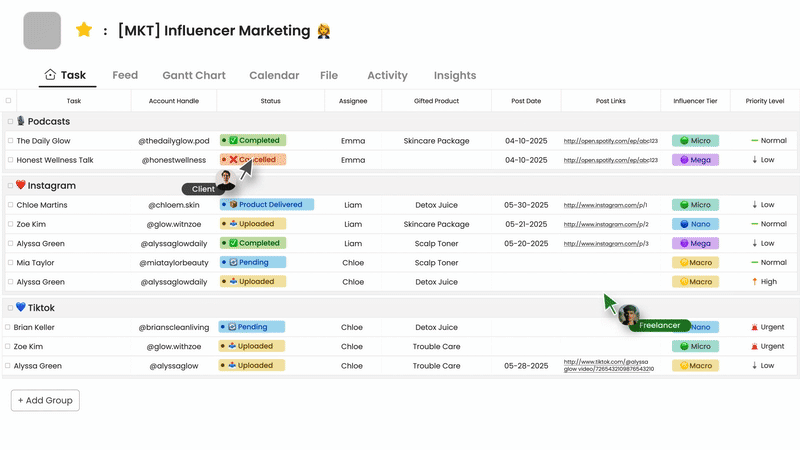
Coordinating Complex Projects
For larger projects with multiple moving parts, project management tools are essential. While platforms like Monday.com and Jira are widely used, they often require integrating separate tools for communication, file management, or scheduling. In contrast, Morningmate offers a centralized project management experience, uniting all these functions in one intuitive workspace.
With Morningmate, managers can create and assign tasks, set deadlines, and track progress within a unified, project-based structure. Its auto-generated Gantt charts, AI-powered task breakdowns, and dashboard widgets help ensure clarity and alignment across teams.
Planning and Structuring Projects
Morningmate enables structured project planning with customizable templates, and customizable task workflows. Managers can easily define goals, add key milestones, and assign responsibilities—all within a single project space that supports both internal team members and external collaborators.
Monitoring and Adjusting Progress
Unlike tools that require complex add-ons, Morningmate offers built-in dashboards to monitor project health in real time. With smart filtering, task status indicators, and visual timelines, managers can spot potential delays early and adjust timelines or resources accordingly.
Managing Resources Efficiently
Morningmate supports role-based access control, resource tagging, and activity logs, helping leaders allocate people and files effectively. This integrated structure reduces dependency on external HR or IT systems and streamlines resource coordination.
Reporting and Analytics
Morningmate automatically tracks project updates and activity logs, enabling data-backed reporting. Users can generate weekly summaries, view project activity at a glance, or review completed tasks by user or priority level—all without switching platforms.
Gaining Insights through Data
Data-driven insights are invaluable for continuous improvement. Project management tools provide detailed reports on team performance, task completion rates, and project timelines. By analyzing this data, managers can identify trends and make informed decisions to optimize project execution.
Identifying Areas for Improvement
Reports generated by project management tools highlight areas where teams may be underperforming. By identifying these areas, managers can implement targeted training or process adjustments to enhance team capabilities. Continuous improvement ensures that teams remain competitive and capable of meeting evolving business needs.
Enhancing Decision-Making with Analytics
Analytics provide a deeper understanding of project dynamics. By leveraging data from project management tools, managers can make strategic decisions that align with organizational goals. This data-driven approach enhances decision-making and contributes to the overall success of the organization.
Note-taking and Information Management Tools
Capturing Ideas and Information
Managers often need to capture and organize a vast amount of information. Note-taking tools like Evernote and OneNote allow you to jot down ideas, store important documents, and organize information into easily accessible categories. These tools ensure that you never lose an important thought or document again.
Organizing Information Systematically
Systematic organization is crucial for managing information effectively. Note-taking tools allow managers to categorize notes, attach files, and create tags for easy retrieval. This organization ensures that important information is readily accessible when needed, enhancing decision-making and productivity.
Facilitating Creative Thinking
Creativity often strikes unexpectedly, and note-taking tools provide a platform to capture ideas as they arise. By recording thoughts and insights immediately, managers can ensure that valuable ideas are not lost. This habit of capturing ideas fosters innovation and supports strategic planning.
Maintaining a Knowledge Repository
A centralized knowledge repository is invaluable for information management. Tools like OneNote allow managers to store and organize documents, meeting notes, and research in one place. This repository serves as a reference point for the team, ensuring that valuable information is preserved and easily accessible.
Centralizing Knowledge
Knowledge management tools like Confluence and Notion help managers create a centralized repository of information. Team members can access this information anytime, ensuring that everyone has the resources they need to perform their tasks effectively. This centralization of knowledge fosters transparency and collaboration within the team.
Building a Collaborative Knowledge Base
A collaborative knowledge base is a powerful tool for team development. Tools like Confluence allow team members to contribute to shared documents, promoting knowledge sharing and collaboration. By building a collective repository, teams can leverage shared expertise and drive continuous learning.
Ensuring Information Accessibility
Accessibility is key to effective knowledge management. Platforms like Notion provide intuitive interfaces that make it easy for team members to find and access information. This accessibility ensures that everyone has the resources they need to perform their tasks efficiently, reducing delays and enhancing productivity.
Promoting a Culture of Transparency
Centralized knowledge tools promote transparency by providing a single source of truth for the team. By making information openly accessible, managers can foster a culture of trust and collaboration. This transparency ensures that all team members are aligned and informed, contributing to a cohesive work environment.
Financial and Resource Management Tools
Budgeting and Financial Planning
For managers responsible for budgets and financial planning, tools like QuickBooks and FreshBooks offer robust accounting and budgeting features. These tools help track expenses, generate financial reports, and manage invoices. With clear financial insights, managers can make informed decisions to optimize resource allocation.
Tracking and Analyzing Expenses
Effective budgeting begins with tracking expenses accurately. Tools like QuickBooks provide detailed insights into spending patterns, allowing managers to identify areas where costs can be reduced. By analyzing these insights, managers can make informed decisions to optimize budgets and enhance financial performance.
Generating Comprehensive Financial Reports
Financial reports are essential for understanding the financial health of a project or department. Tools like FreshBooks generate detailed reports that provide insights into revenue, expenses, and profitability. These reports enable managers to make strategic financial decisions and ensure that projects remain financially viable.
Streamlining Invoicing Processes
Invoicing can be a time-consuming process, but tools like QuickBooks automate and streamline it. By generating professional invoices quickly and tracking payment status, managers can maintain healthy cash flow and minimize administrative burdens. Streamlined invoicing contributes to efficient financial management and enhances client relationships.
Resource Allocation and Scheduling
Tools like Resource Guru and Float provide resource management features that help managers allocate staff, schedule shifts, and monitor resource utilization. This ensures that teams are adequately staffed and resources are used efficiently.
Optimizing Staff Allocation
Resource management tools like Resource Guru help managers allocate staff based on project needs and availability. By optimizing staff allocation, managers can ensure that projects are adequately staffed and that team members are not overburdened. This optimization enhances productivity and job satisfaction.
Scheduling Shifts Effectively
Effective shift scheduling is crucial for maintaining team productivity and morale. Tools like Float allow managers to schedule shifts based on team availability and project demands. By ensuring fair and balanced scheduling, managers can prevent burnout and maintain a motivated workforce.
Monitoring Resource Utilization
Resource utilization is key to maximizing efficiency. Tools like Resource Guru provide insights into how resources are being used, allowing managers to identify any underutilization or overburdening. By monitoring resource utilization, managers can make informed decisions to optimize workflow and enhance team performance.
Conclusion
In today’s fast-paced business environment, having the right organizational tools is essential for effective management. From task management to communication and financial planning, these tools empower managers to streamline operations, enhance productivity, and achieve their goals. By leveraging these organizational tools, managers can lead their teams to success and drive their organizations forward.
Leveraging Tools for Success
Remember, the key to successful management lies not just in the tools you use, but in how you use them to create a cohesive and efficient work environment. Choose the tools that best fit your team’s needs and watch as your productivity soars.
Fostering a Culture of Continuous Improvement
Embrace a culture of continuous improvement by regularly evaluating and updating your toolset. Stay informed about new features and tools that can further enhance your management capabilities. By fostering a mindset of adaptability and growth, you can ensure that your team remains competitive and capable of meeting evolving business challenges.

